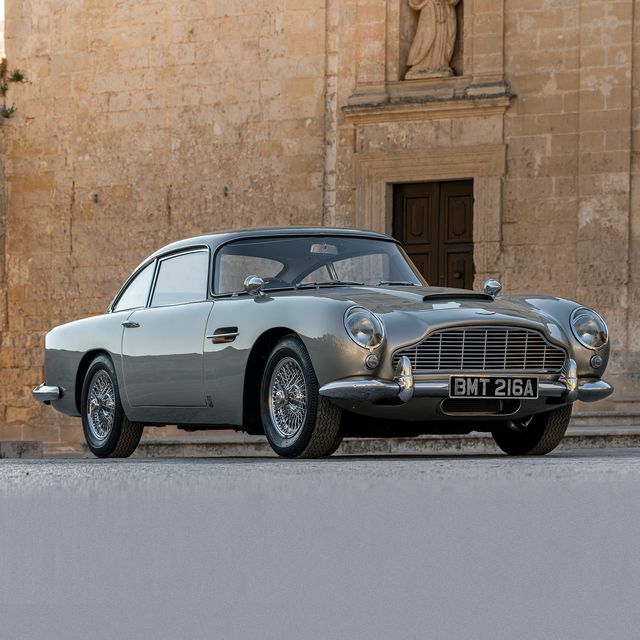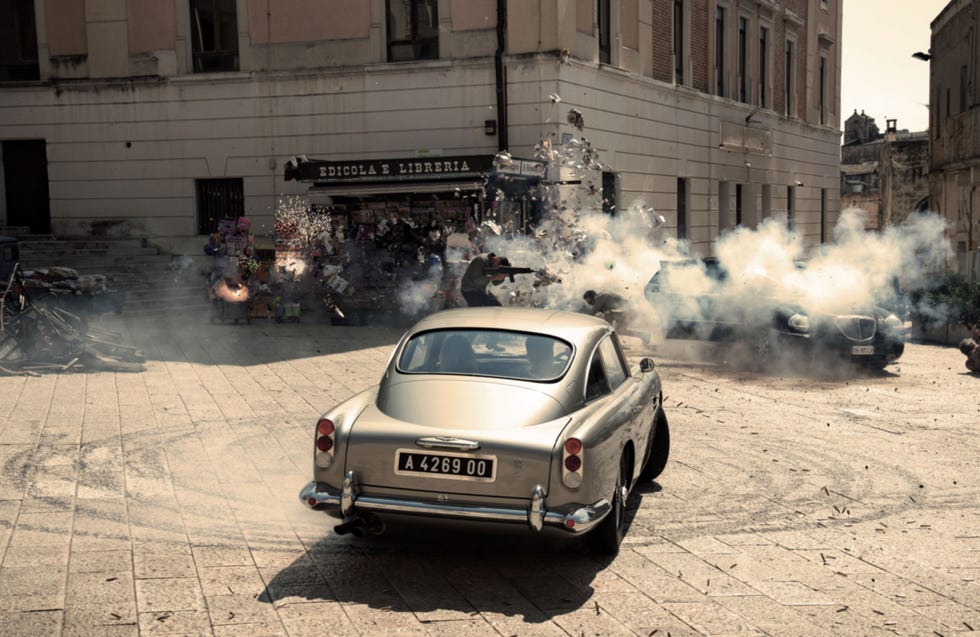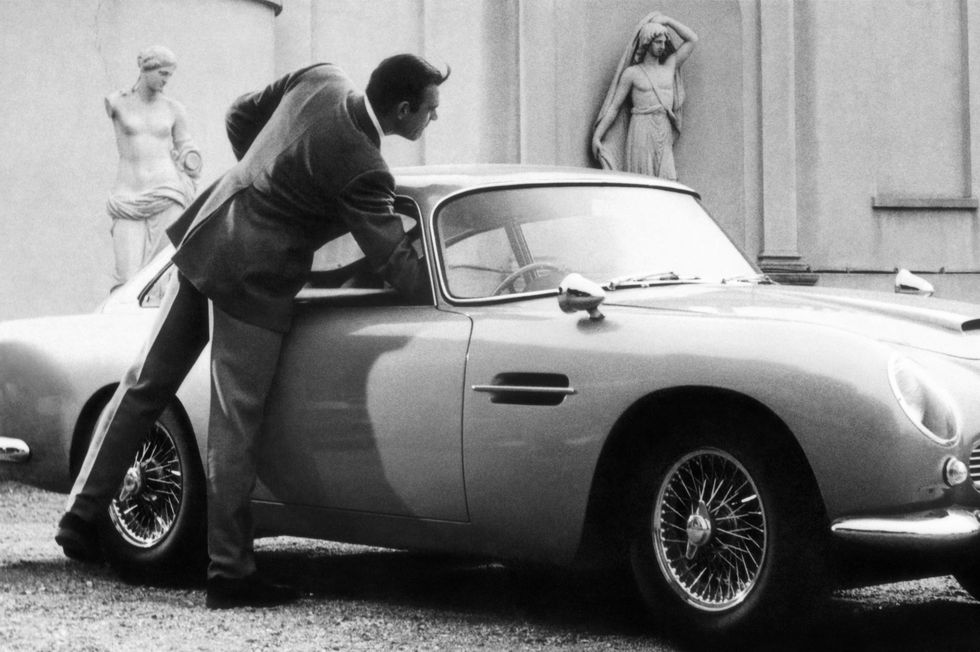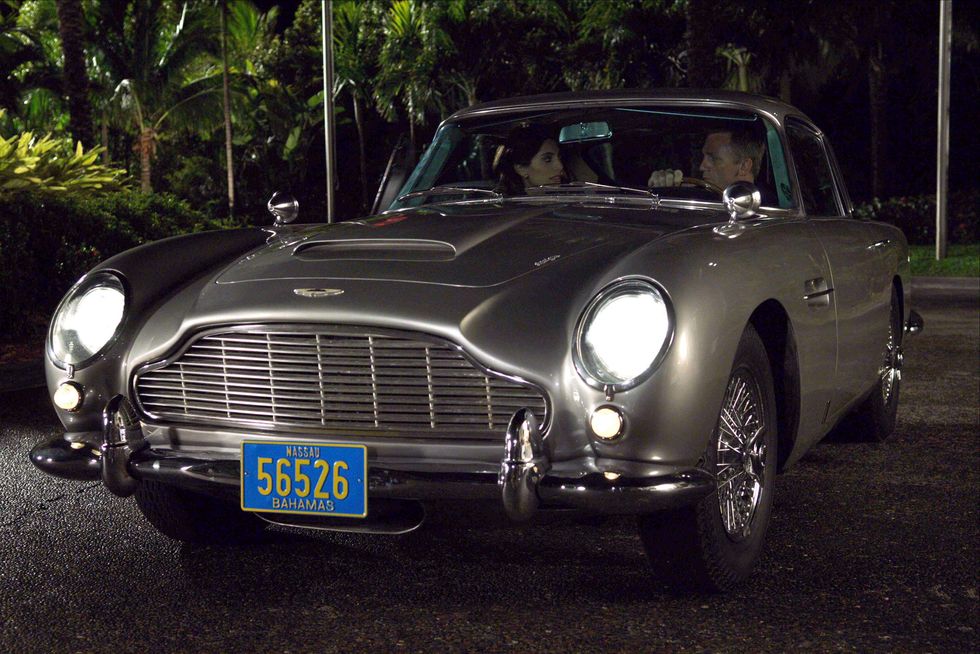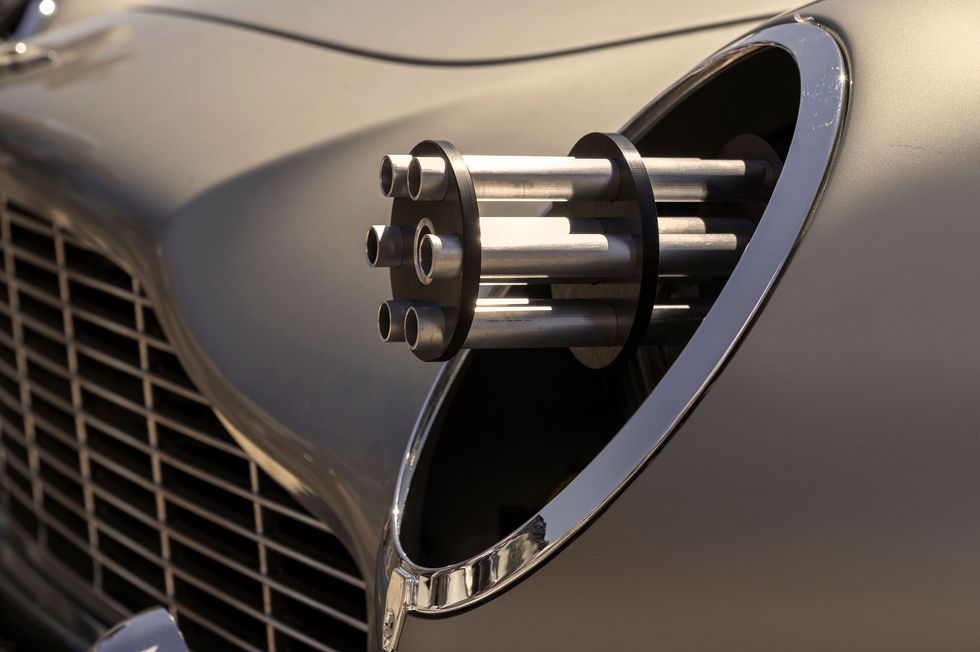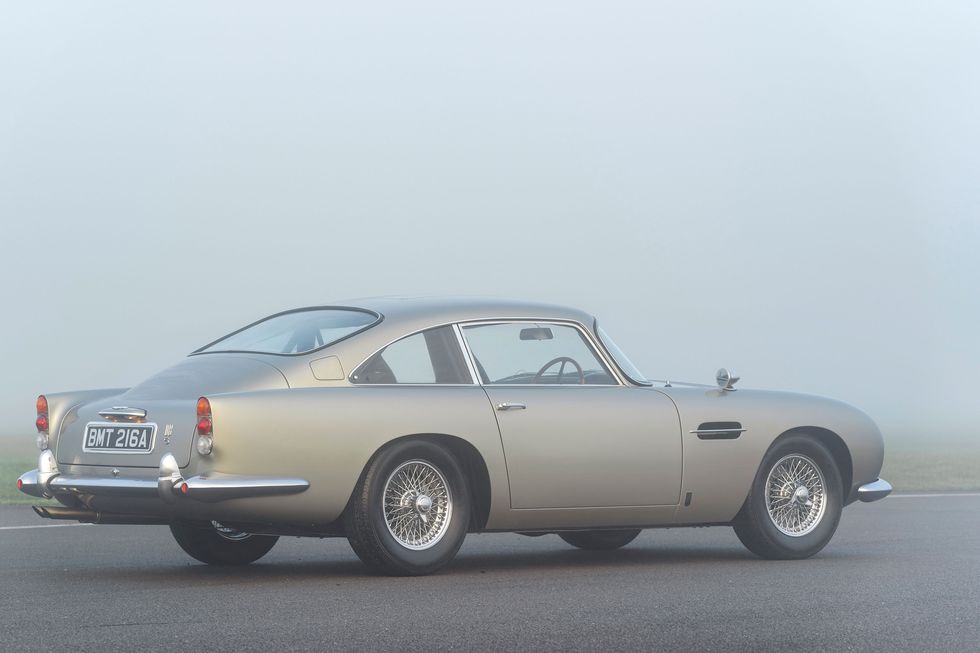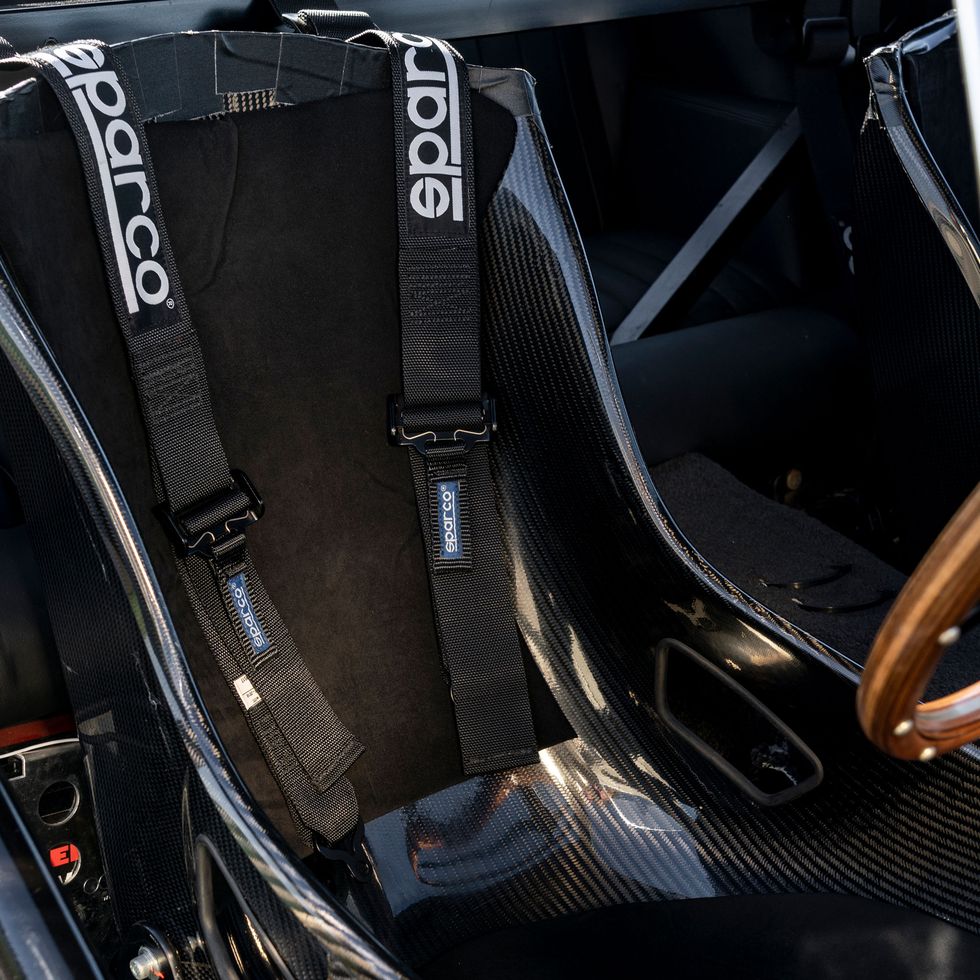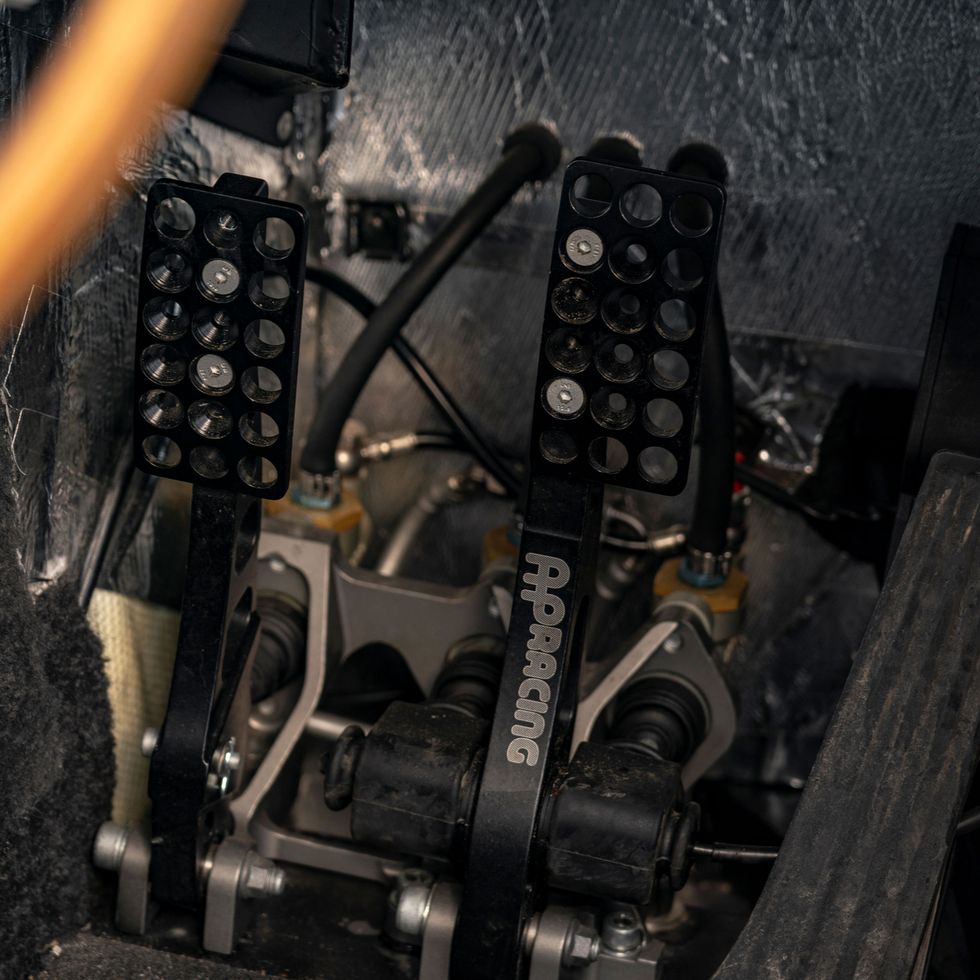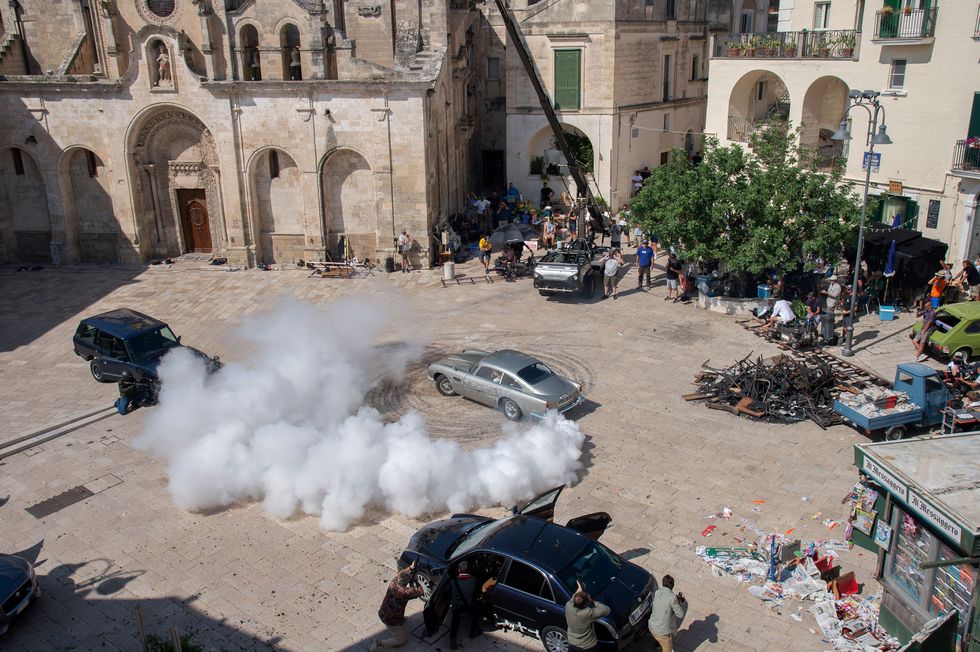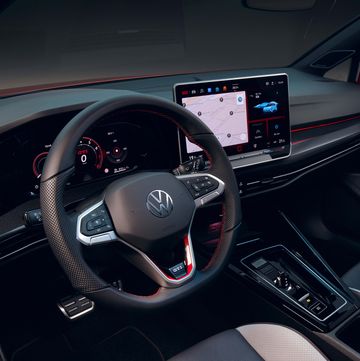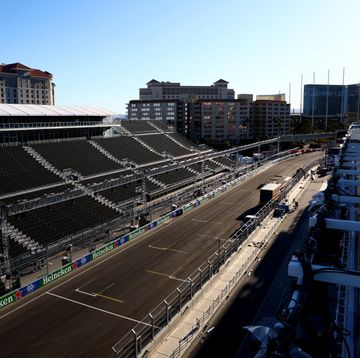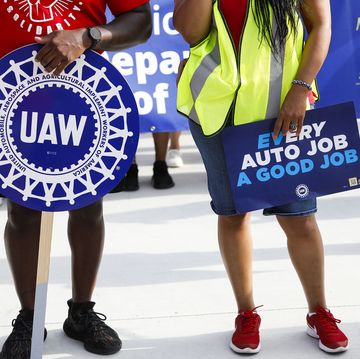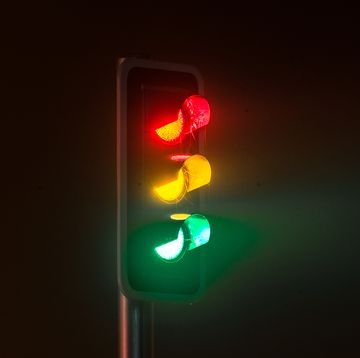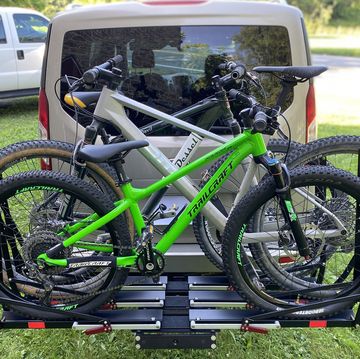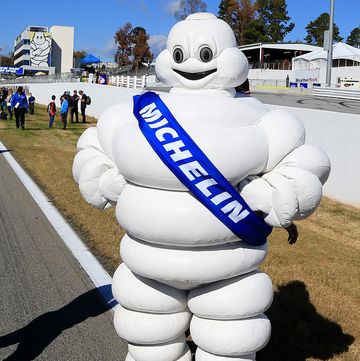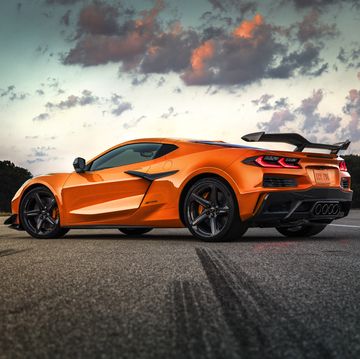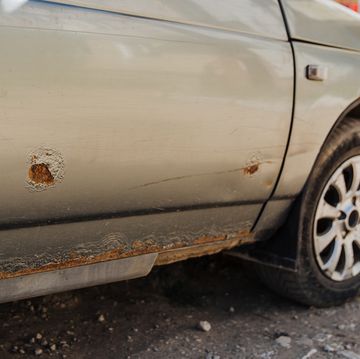In James Bond’s latest outing, No Time to Die, the spy’s iconic Aston Martin DB5 emerges from the mangled wreckage of its destruction in 2012’s Skyfall to resume its rightful place as Bond’s vehicular multitool. Seen first in the new film shuffling Bond (Daniel Craig) and love interest Madeleine Swann (Léa Seydoux) around Matera, Italy, the DB5’s bucolic retirement comes to an abrupt halt with a barrage of machine gun fire from incoming Spectre agents. As all hell breaks loose and the evil gunmen corner their targets, the DB5’s bulletproof glass blocks the onslaught and twin Gatling guns emerge from its headlights. In a deadly pirouette, the DB5 and Bond spray the goons—and poor Matera—back to the Stone Age.
There have been many totems throughout six decades of James Bond films—the vodka martinis, the Walther PPK’s, the Rolexes and Omegas, the gadgets—but none possess the same enduring allure of the Aston Martin DB5. Its frequent re-emergence in the franchise has forged a bond between itself and the audience. It’s a psychological anchor as much for us as for its permanently stressed driver. When Bond steers the DB5, he seems simultaneously at peace and ready for war. His confident, easy mastery of the vehicle resonates with anyone who’s ever felt a sense of purpose behind the wheel.
The car’s legacy comes full circle in No Time to Die. Director Cary Joji Fukunaga uses high-angle and overhead shots to capture the DB5’s action. The camerawork is sexy, but reverent. Fukunaga captured the vehicle with its history in mind. He says when Bond won the car in 2006’s Casino Royale, “it’s almost as though he wins the clothing of Bond. It’s part of his origin, and seeing it destroyed in Skyfall was almost like, in a Joseph Campbell sense, the killing of the father. It’s tied to his heritage.”
No Time to Die marks over a half-century of partnership between Aston Martin and James Bond. Early in the making of 1964’s Goldfinger, the franchise’s third installment, production designer Ken Adam passed a silver DB5 on his way to Pinewood Studios, and began to consider it for Bond’s ride of choice over his original selection, a red Jaguar E-Type. Among luxury brands, Aston Martin has never been as stratospherically inaccessible as Ferrari, nor as commonplace as Mercedes-Benz. Amid the bluster of a Lambo or the familiarity of a Porsche 911, it’s an oft-forgotten sports car, but it’s nonetheless self-assured about its place and capabilities. “The Aston Martin DB5 is cool, sleek, alluring, but unknowable—much like Bond himself,” says film historian Mark Edlitz, author of The Many Lives of James Bond.
Though Ian Fleming’s novels specified that Bond drove an Aston Martin DB Mark III, the DB5 was more current to Goldfinger, hence Adam’s interest in the model. But the film’s producers couldn’t afford to buy a DB5, so they cut a deal with Aston Martin to borrow it. The carmaker was reluctant at first. “At the time there was no such thing as product placement, and really no such thing as a movie franchise, either,” says Marek Reichman, Aston Martin’s longtime design director and the chief steward of the prestigious carmaker’s relationship with the 007 franchise. “But luckily someone at Aston Martin eventually said sure, we can loan you a car—and presto, here we are today.”
The DB5 debuted in Goldfinger and has since made appearances in Thunderball (1965), GoldenEye (1995), Tomorrow Never Dies (1997), The World is Not Enough (1999), Casino Royale (2006), SkyFall (2012), Spectre (2015), and No Time to Die. The car fits the franchise’s timeless aesthetic, Reichman argues, but it also carried practical traits that went beyond style. When Aston released the DB5 in 1963, the company was highly successful in sports car racing, including a 1959 victory with the DB1 at Le Mans. The DB5 was essentially a stunt vehicle before it arrived on the Bond set. “The original DB5 had to be able to properly drive through corners [and overtake] a Ferrari in the Alps,” Reichman says. “People see that and it becomes part of the story, that this vehicle is a reliable tool for James Bond to do his job.”
Clever gadgetry expanded the vehicle’s reliability beyond its driving prowess. In Goldfinger, the DB5 emerged from Q’s lab equipped with rotating license plates, oil slicks, smoke screens, an extendable rear bulletproof shield, left and right forward machine guns, extendable tire slashers, and a GPS-like navigation system able to follow tracking devices attached to other cars. It also boasted an infamous ejection seat, used to rid Bond of an unwelcome goon. This was the standard build for Bond’s DB5. Aside from the addition of rear-facing water jets in 1965’s Thunderball, it remained largely unchanged, even as Bond’s other vehicles acquired kitschy gimmicks. The Spy Who Loved Me’s Lotus Espirit could drive underwater and fire anti-aircraft missiles, while Tomorrow Never Dies’ BMW 750iL came with a smartphone-esque remote control. Other Bond cars have had rocket boosters, camouflaging devices, and glovebox defibrillators, but the DB5 has foregone extra toys in favor of classical elegance.
For No Time to Die, Fukunaga sought a disciplined approach to outfitting the DB5, with gadgets that would help take down the bad guys but remain in the realm of feasibility and groundedness. The car’s smokescreen is back, but now it has tiny mines it can deploy against pursuers. The miniguns came back with the director’s enthusiasm. “I think they’re awesome,” he says wryly. “Just in terms of the firepower [the car] could unleash in a short period of time. It’s definitely something I wanted to put in.” The miniguns might push the envelope, but they don’t escape the attention to detail that makes movie magic feel tactile. They eject bullet casings en masse from the side air vents, and production crews verified beforehand that the guns in question could even fit in the space allotted by the headlights.
Bond films swing between plausibility and preposterousness. And while Craig’s time with the character has seen villains with wildly unbelievable plans for global domination, the action scenes have been physical, roughshod, and intimate. The automotive sequences emphasize believability as well, Reichman notes. “You know the things that are possible, and things that are fantasy,” he says. “When you see someone [in the film] do a 50-meter jump and ride away, you might say no. But then you go on YouTube and see these stunt riders doing exactly that in the desert buttes, and you realize it actually can be done.” The cars just might need some reinforcement going into production—and the wheel realignments afterwards.
No Time to Die employed 10 DB5s. Two were hero cars—identical authentic vintage models used for closeups—and the remaining eight were purpose-built stunt cars. Aston engineered the stunt models at their Wellesbourne, U.K., facility, wrapping them in carbon fiber skin before painting them silver and finishing them with accurate DB5 trim. “If I drove one in front of you now, you couldn’t tell it was a replica,” Reichman says. “But when you open the hood and look down at the suspension you’d see rows of cast aluminum parts, aluminum space frames, carbon fiber chassis components...then when you close the hood, you’re back to 1964.”
All the stunt vehicles have roll cages, six-cylinder engines, performance brakes, hydraulic hand brakes, and rallycross suspensions. Additionally, small, protected fuel tanks, battery isolators, and fire extinguishing systems ensure safety. “They’re basically full rally cars built inside a DB5 exterior,” says Chris Corbould, No Time to Die’s special effects supervisor. “The first thing that excited me when the DB5 came up was that it wasn't just going to have a cameo role in the film and look pretty—it was going to be in full battle mode.”
No Time to Die’s stunt cars are lightweight and maneuverable, designed to meet the requirements of the film’s rigorous action scenes, but pre-production still involved considerable preparation. The cars had to be more than just fast. “Normally [Aston Martin’s] engineering data gathering is oriented toward doing a 6:40 lap time at the Nürburgring,” Reichman says. “Here the engineering data is oriented toward charging up a steep incline, doing a donut, jumping over steps, and going down the other side.”
The cars performed their feats with flying colors. “We didn't have one glitch,” Corbould says. But the crew had to be mindful of shooting on location in Mantera. The structures along the streets where the DB5 was careening and swerving were thousands of years old. “We had to do a lot of work to protect the buildings,” Corbould says. “If there was a tight corner where we knew the cars would be skidding around we built in protection for the buildings, dressed to look like part of the original.”
The No Time to Die crew also had to contend with the centuries’ worth of polish on Mantera’s cobblestone streets, which limited the stunt drivers’ ability to find traction. Crews sprayed a carbonated soda-based concoction onto the roads. When it dried, it became sticky enough for the cars to maneuver safely, even if actors were driving. After the minigun spin, Fukunaga wanted a camera to push in on Bond as the smoke lifted from the DB5, so a stunt double would have made continuity difficult. Craig stepped in to appear in the shot—one of the final moments between the actor and the machine in the franchise. The car’s ultimate fate in No Time to Die is inconclusive, a reflection of this Bond film’s position as an ellipses for the franchise. This is a punctuation mark, but perhaps not an endpoint.
The Bond DB5 has disappeared and reappeared over the years in different manifestations: escape vehicle, mechanical wingman, sex symbol, and instrument of destruction. In No Time to Die, it’s an icon, both a memory of the past and, possibly, a vessel for the future. Fukunaga’s interpretation of the car marries its functionality with its history. “It’s a beautiful, beautiful piece of engineering,” he says. “The fun part was trying to reinterpret what it means in this film. There’s a continuity there that I was very happy to keep going.” Like its storied driver, the Aston Martin DB5 has seen varied iterations, but its defining elements have remained consistent. Even if it doesn’t come back like this, it will come back with a new Bond and new trajectory—transformed, yet recognizable.
Eric Adams is a writer and photographer who focuses on technology, transportation, science, travel, and other subjects for a wide range of outlets, including Wired, The Drive, Gear Patrol, Men's Health, Popular Science, Forbes, and others.
